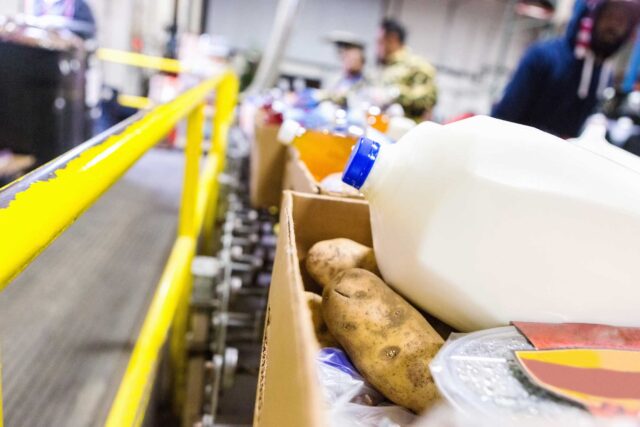Examining the health of California’s economy has been a key component of PPIC’s work since we opened our doors in 1994. Since then, substantial changes—from new technologies to shifting demographics—have deeply altered California’s economic landscape, even as we have weathered major cycles of recession and recovery.
This year we’ve doubled down on our commitment, launching the PPIC Economic Policy Center to inspire policy choices that will shape a robust and resilient economic future for our state. In the wake of this new beginning—and in honor of PPIC’s anniversary—the time is right to take stock of our state’s economic journey over the last 30 years.
Overall economic conditions. In early 1994 California was still recovering from the 1990 recession, and 9.3% of California’s labor force was unemployed. Though the recession had lasted just eight months, it took more than eight years for the unemployment rate to recover. 2024 looks very different. The pandemic recession of 2020 was followed by a speedy recovery; unemployment returned to pre-pandemic levels in two years. Despite a recent uptick, which is worth watching, unemployment stands at a relatively low 5.1% as of December 2023.
But high inflation left its mark, both 30 years ago and today. An oil price shock in 1990 sent inflation north of 6% (annual increase) and remained above the Federal Reserve’s 2% target until 1997. Today, the fallout from prices reaching above 9% growth in mid-2022 is still affecting California families and businesses, as well as the state’s budget. Current predictions suggest inflation may return to the 2% target by 2027—a slightly faster recovery if all goes well.
Individual outcomes. Income has grown substantially over the past 30 years; personal income (from all business, salary, and investment sources) is 62% higher in 2022 than it was in 1994, growing from about $47,600 to $77,000 per capita (adjusted for inflation). But the distribution of income has become more skewed over time, with the greatest growth occurring among the highest earners.
In 1994, low incomes hit a grim milestone: the bottom 10% of families earned $18,000 or less (in today’s dollars), the lowest level recorded between 1980 and 2021. Median incomes had bottomed out at $73,300 in 1993. Top incomes, though affected initially by the 1990 recession, had already fully recovered by 1994 (to $211,000) and were poised for remarkable growth over the following three decades.
One bright spot in the midst of this historic divergence: the share of Californians in poverty declined substantially—by roughly 40%—since 1994. Expansions of tax credits and food assistance to low-income families played a big role in poverty reduction. If it were not for the rising cost of living in California, decreases in poverty would have been even larger. Today the poverty rate stands at 13.2%
Major transformations. In the past 30 years, California’s economy has undergone major changes, mainly brought about by population and technological shifts. Innovations in computing, automation, and information technology have grown entirely new sectors—concentrated in California—creating new wealth and shifting activity in many other sectors. Technological advances in production contributed to the shrinking need for workers in sectors like manufacturing, now 20% smaller than it was in 1994. However, new technology enhanced the productivity of some workers, earning them higher wages—while contributing to ongoing income disparities.
Over these past 30 years, California has been a draw for many, especially for individuals with college degrees and for immigrants. The state’s workforce has grown 26% since 1994 and immigrants are now one third of the workforce—compared to one quarter in 1990. But the state’s population has also shifted dramatically—moving inland, often for more affordable housing. Riverside County’s workforce nearly doubled since 1994, the fastest growth across all counties. Kern, San Joaquin, and San Bernardino Counties also grew notably, at 44–49%.
Looking ahead, population and technology will further reshape our economy, presenting both opportunities and challenges. Our population is aging, driving a shrinking workforce relative to the size of the population. California’s population declined during the pandemic, and there is muted activity in downtown business districts due to remote work. Automation and artificial intelligence technologies may further enhance and/or replace the skills of current workers and make certain aspects of business activity either more efficient or irrelevant. The risk of repeating and furthering the divergence in economic outcomes should not be ignored.
While these—and other—challenges are real, California also has many strengths, some born from the exceptional economic growth that followed the rocky early-90s period. Our labor market is in much better condition than in 1994, with lower unemployment and stronger job growth. Business startups faltered a bit during the pandemic but have returned to strong growth. Incomes have improved substantially and poverty is notably lower than in the early 1990s.
Learning from past policy choices and understanding trends is fundamental to informed policymaking that supports economic growth and greater prosperity. As PPIC embarks on its next 30 years, our Economic Policy Center is looking forward to playing a special role in providing trusted data, analysis, and insight—helping policymakers to shape and improve California’s economic future for all Californians.
Topics
artificial intelligence Economic Growth Economic Mobility Economic Trends Economy future of work Immigrants in California income income inequality inflation Jobs and Employment Poverty & Inequality PPIC 30th anniversary recession recovery safety net unemployment Workforce and TrainingLearn More

Inflation Has Affected Family Spending

Income Inequality in California

Labor Force Participation in California

Making Sense of California’s Economy

Priorities for California’s Economy



